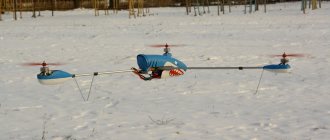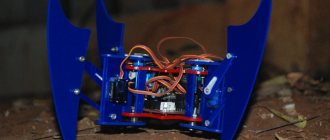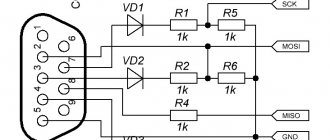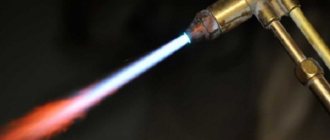Instructions
- The tractor cylinder is practically a ready-made barrel for a homemade salute gun. Make a cleaning rod. It is made from a wooden rod of suitable diameter, precisely adjusted to the inner diameter of the trunk. The length of the cleaning rod should exceed the length of the barrel by 0.5 m.
- Pour the powder mixture into a metal can. Use a wooden stick (such as a branch) to plug the oil pipe hole at the base of the cylinder. Place the cylinder vertically with the “barrel” up and pour the powder mixture into it 1 cm above the level of the oil pipe hole. Tamp the mixture with a cleaning rod.
- Roll up a piece of either linen or cotton fabric in 2-3 layers and push it into the barrel with a ramrod until it stops. Compact the charge with several blows to the cleaning rod. In this case, a piece of fabric will play the role of a wad. After this, remove the wooden plug from the oil pipe. The gun can be considered loaded.
- Bend an L-shaped bracket from steel wire, the short part of which should be approximately 2 times longer than the height of the oil pipe, and lightly sharpen this part into a cone. It should fit freely into the hole in the pipe. The long part (70-100 cm) can be equipped with a loop-shaped handle made of the same wire.
- Before firing, position the cylinder at an angle (approximately 45° to the horizontal) in a safe direction so that there are no people, animals or flammable objects in the line of fire. The cannon can be mounted on a wooden “slingshot” firmly driven into the ground so that the breech of the cannon rests against a wooden stake driven into the ground.
- Heat the short pointed end of the metal bracket over a fire and quickly insert it into the hole in the pipe. When testing the gun for the first time, it is better to carry out this procedure from cover. The gun must fire, after which you need to let the barrel cool and carefully inspect it for cracks, chips and any other defects. If they are not found, you can begin decorating the gun. Clean and degrease the barrel.
- To give the cannon a historical shape, wrap a rope soaked in epoxy resin around the hydraulic cylinder. This way you can create decorative thickenings or tides. After the resin has hardened, treat the resulting structure with sandpaper and paint it bronze with automotive bronze enamel or bitumen varnish. The cannon carriage can be made of wood. If you plan to make a carriage, then while wrapping the cannon with rope, it is recommended to immediately fasten and wrap also a transverse metal pipe, which will play the role of an axis of rotation.
Everyone would like to have something special at their dacha, at home. Something that passers-by, neighbors, and friends would admire. In this article I will describe the process of making a decorative cannon. If I did it, you can do it too. It is enough to have at least some welding skills, be able to handle an angle grinder (grinder), as well as simple carpentry tools. The first thing you need to do is the barrel of the gun itself.
To do this you will need a pipe of different diameters. The diameter depends on the size of your gun. I made the total length one and a half meters. The barrel consists of three parts. The base is cut with a grinder (I cut it by welding), and bent to form a cone. The middle part is straight, and at the end of the long part a rim is made from a pipe. I made it from twisted wire, but a regular one will do.
Next, we cut out a circle with the smallest diameter, and in it there is a hole for the inner pipe. The diameter ratio is one to two. You can decorate the barrel with a rolled strip, but a regular one will do. Weld tubes on the sides for fastening to the frame. This is the main thing. If you have a well-developed imagination, you can come up with many more small details. Next we make the frame. I took a metal profile. But this is not necessary; a corner will do. Dimensions depend on the gun muzzle. Don't forget about the mount for it and for the wheels. The frame is upholstered exclusively in wood. If you do it from a profile like I did, you will need a strip for cladding. It's easier to take a corner. My wheels are made of iron.
And wooden ones made of oak also look great. Upon completion of welding and plumbing work, we will retrain as an artist. I painted with so-called cast iron. And the patterns are copper and gold. It turned out well. In general, look at the photos, get inspired and create unusual things yourself from simple objects.
Gauss Gun on AliExpress
Two-stage Gauss gun
- Copper enameled winding wires with a diameter of 0.8 mm
- Two SCR type thyristors
- Optical switch block
- 450V 1000uF capacitors installed
- Tubes with a diameter of 8 mm and a length of 200 mm
- Price about 1000 rubles.
Four stage Gauss gun
- The outer diameter of the tube is 10 mm and the inner diameter is 8 mm
- Need 12V lithium battery and 70W power supply
- Full set of voltage control, charging and discharging, lithium battery and built-in charger.
- Price about 10,000 rubles.
Multi-stage Gauss gun
- The most powerful specimens, having 6 stages and accelerating a metal projectile to the maximum energy permitted by law of 7 J.
- The total capacity of storage capacitors can exceed 10,000 microfarads.
- Price about 12,000 rubles.
Warning! The device is prohibited for sale or use by persons under 16 years of age, for adults only. You cannot shoot at people or animals. Do not touch circuit elements - high voltage.
Weapons of the very distant future. Part 1. Gauss gun and railgun
For probably 50 years now, everyone has been saying that the age of gunpowder has come to an end, and firearms can no longer develop.
Despite the fact that I absolutely disagree with this statement and believe that modern firearms, or rather cartridges, still have room to grow and improve, I cannot ignore attempts to replace gunpowder and, in general, the usual operating principle of weapons. It is clear that so far much of what has been invented is simply impossible, mainly due to the lack of a compact source of electric current or due to the complexity of production and maintenance, but at the same time there are many interesting projects lying on a dusty shelf and waiting for their time. Gauss gun
I would like to start with this particular sample for the reason that it is quite simple, and also because I have my own small experience in trying to create such a weapon, and, I must say, not the most unsuccessful one.
Personally, I first learned about this type of weapon not from the game “Stalker”, although it is thanks to it that millions know about this weapon, and not even from the game Fallout, but from literature, namely from the UT magazine. The Gauss cannon presented in the magazine was the most primitive and was positioned as a children's toy. Thus, the “weapon” itself consisted of a plastic tube with a coil of copper wire wound on it, which played the role of an electromagnet when electric current was applied to it. A metal ball was placed into the tube, which, when current was applied, sought to attract an electromagnet. To prevent the ball from “hanging” in the electromagnet, the current supply was short-term, from an electrolytic capacitor. Thus, the ball accelerated to the electromagnet, and then, when the electromagnet was turned off, it flew on its own. An electronic target was proposed for all this, but let’s not get into the topic of what interesting, useful and, most importantly, popular literature used to be.
Actually, the device described above is the simplest Gauss cannon, but it is natural that such a device clearly cannot be a weapon, unless it has a very large and powerful single electromagnet. To achieve acceptable projectile speeds, it is necessary to use, so to speak, a stepwise acceleration system, that is, several electromagnets must be installed on the barrel one after another. The main problem when creating such a device at home is the synchronization of the operation of electromagnets, since the speed of the projectile being thrown directly depends on this. Although straight hands, a soldering iron and an attic or cottage with old TVs, tape recorders, record players and no difficulties are not terrible. At the moment, having glanced at the sites where people demonstrate their creativity, I noticed that almost everyone places the coils of electromagnets on the barrel itself, roughly speaking, they simply wind the coils around it. Judging by the test results of such samples, such weapons are not far from the current publicly available pneumatics in terms of efficiency, but they are quite suitable for recreational shooting.
Actually, what torments me most is why they are trying to place the coils on the barrel; it would be much more effective to use electromagnets with cores that would be directed by these same cores to the barrel. Thus, it is possible to place, say, 6 electromagnets in the area previously occupied by one electromagnet; accordingly, this will give a greater increase in the speed of the projectile being thrown. Several sections of such electromagnets along the entire length of the barrel will be able to accelerate a small piece of steel to decent speeds, although the installation will weigh a lot even without a current source. For some reason, everyone is trying and calculating the discharge time of the capacitor that powers the coil in order to coordinate the coils with each other so that they accelerate the projectile rather than slow it down. I agree, it’s a very interesting activity to sit down and consider; in general, physics and mathematics are wonderful sciences, but why not coordinate the coils using photos and LEDs and a simple circuit, it seems like there is no particular shortage and you can get the necessary parts for a reasonable fee, although, of course, you can count cheaper. Well, the power source is an electrical network, a transformer, a diode bridge and several electrolytic capacitors connected in parallel. But even with such a monster weighing about 20 kilograms without an autonomous source of electric current, impressive results are unlikely to be achieved, although it depends on how impressionable one is. And no, no, I didn’t do anything like that (lowering my head, moving my foot in a slipper along the floor), I just made that toy from UT with one coil.
In general, even when used as some kind of stationary weapon, say the same machine gun to protect an object that does not change its location, such a weapon will be quite expensive, and most importantly heavy and not the most effective, unless of course we are talking about reasonable dimensions and not about a monster with a five-meter trunk. On the other hand, a very high theoretical rate of fire and ammunition at a price of a penny per half ton look very attractive.
Thus, for a Gauss gun the main problem is that electromagnets have a lot of weight, and, as always, a source of electric current is required. In general, no one is developing weapons based on the Gauss gun; there is a project to launch small satellites, but it is rather theoretical and has not been developed for a long time. Interest in the Gauss gun is maintained only thanks to cinema and computer games, and even to enthusiasts who love to work with their heads and hands, of which, unfortunately, there are not many in our time. For weapons, there is a more practical device that consumes electric current, although the practicality here can be argued, but unlike the Gauss gun, there are certain shifts.
RailGun or in our opinion Railgun
This weapon is no less famous than the Gauss gun, for which we must say thanks to computer games and cinema, however, if everyone who is interested in this type of weapon is familiar with the principle of operation of the Gauss gun, then not everything is clear with the railgun. Let's try to figure out what kind of beast it is, how does it work and what are its prospects?
It all started back in 1920, it was in this year that a patent was received for this type of weapon, and initially, no one planned to use the invention for peaceful purposes. The author of the railgun, or the more famous railgun, is the Frenchman - Andre Louis-Octave Fauchon Vieple. Despite the fact that the designer managed to achieve some success in defeating enemy personnel, no one was interested in his invention, the design was very cumbersome, and the result was so-so and quite comparable to firearms. So for almost twenty years the invention was abandoned, until a country was found that could afford to spend huge amounts of money on the development of science, and especially that part of science that could kill. We are talking about Nazi Germany. It was there that Joachim Hansler became interested in the French invention. Under the leadership of the scientist, a much more effective installation was created, which was only two meters long, but accelerated the projectile to a speed of more than 1200 meters per second, although the projectile itself was made of aluminum alloy and weighed 10 grams. However, this was more than enough to fire at both enemy personnel and unarmored vehicles. In particular, the designer positioned his development as a means of combating air targets. The higher flight speed of a projectile, compared to firearms, made the designer’s work very promising, since it was much easier to fire at moving, and constantly moving, targets. However, the design required improvement and the designer did a lot of work to improve this sample, slightly changing the initial principle of its operation.
In the first sample, everything was more or less clear and there was nothing fantastic. There were two rails, which were the “barrel” of the weapon. The projectile itself was placed between them, which was made of a material that transmits electric current; as a result, when current is supplied to the rails, under the influence of the Lorentz force, the projectile tends to move forward and in ideal conditions, which, naturally, can never be achieved, its speed could approach speed of light. Since there were many factors that prevented the projectile from being accelerated to such speeds, the designer decided to get rid of some of them. The main achievement was that in the latest developments, the no longer thrown projectile closed the circuit, this was done by an electric arc behind the thrown projectile; in fact, this solution is still used today, only being improved. Thus, the designer managed to approach the flight speed of a thrown projectile equal to 3 kilometers per second, this was 1944 of the last century. Fortunately, the designer did not have enough time to complete his work and solve the problems that the weapon had, and there were quite a few of them. And so much so that this development was pushed to the Americans and no work was carried out in this direction in the Soviet Union. It was only in the seventies that we began to develop these weapons and at the moment we, unfortunately, are lagging behind, well, at least according to publicly available data. In the United States, they have long reached a speed of 7.5 kilometers per second and are not going to stop. Work is currently being carried out towards the development of the railgun as a means of air defense, so as a hand-held firearm, the railgun is still a fantasy or a very distant future.
The main problem with the railgun is that to achieve maximum efficiency it must use rails with very low resistance. At the moment, they are coated with silver, which does not seem to be so expensive financially, but taking into account the fact that the “barrel” of the weapon is not one or two meters long, this is already a significant expense. In addition, after several shots, the rails need to be changed and restored, which costs money, and the rate of fire of such weapons remains very low. In addition, we should not forget that the rails themselves try to push away from each other under the influence of the same forces that accelerate the projectile. For this reason, the structure must have sufficient strength, but at the same time the rails themselves must be able to be quickly replaced. But this is not the main problem. A shot requires a huge amount of energy, so you can’t get away with just a car battery on your back; more powerful sources of electric current are already needed, which calls into question the mobility of such a system. So in the USA they are planning to install similar installations on destroyers, and they are already talking about automating the supply of projectiles, cooling and other delights of civilization. At the moment, the declared firing range for ground targets is 180 kilometers, but they are still silent about air targets. Our designers have not yet decided where they will apply their developments. However, from scraps of information we can conclude that the railgun will not be used as an independent weapon for now, but as a means that complements already existing long-range weapons, allowing you to significantly add the desired couple of hundred meters per second to the speed of the projectile being thrown, the railgun has good prospects, yes and the cost of such a development will be much lower than some megaguns on our own ships.
The only question that remains is whether we should be considered behind in this matter, since usually what works poorly is tried to be promoted in every possible way “in case everyone was afraid”, but what is really effective, but its time has not yet come, is closed behind seven locks . Well, at least that's what I want to believe.
Making a cannon
Follow these instructions:
- Make a hole in the lid of the jar with a diameter equal to the diameter of your tube.
- Make two small holes in the side of the jar itself.
- Insert the wire from the piezoelectric element into one of the holes.
- Insert a piece of wire into the second hole and connect it to the end of the wire from the piezoelectric element.
- Insert the tube and wrap everything tightly with tape.
- Fill the combustion chamber with any highly flammable substance.
- Insert what you will shoot into the tube and press the piezo element button.
As you can see, there is nothing complicated in the assembly process, and such simple entertainment will help pass the time at home or at work, as well as amuse those around you or your own son.
Sometimes, for historical reconstructions or just for fun, you may need a more serious weapon than a sword or bow. If you wish, you can even create a cannon with your own hands, and decorate it to match almost any historical weapon. Of course, it is impractical to make a real fire fighting cannon in an apartment, but making a small fireworks part or element from paper is quite possible.
And our article today will tell you how to make a homemade cannon.









